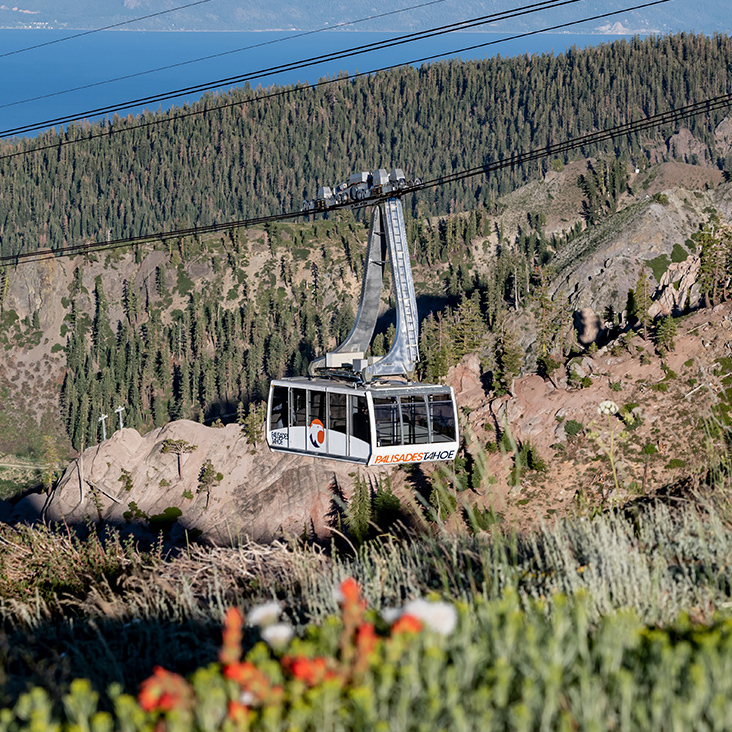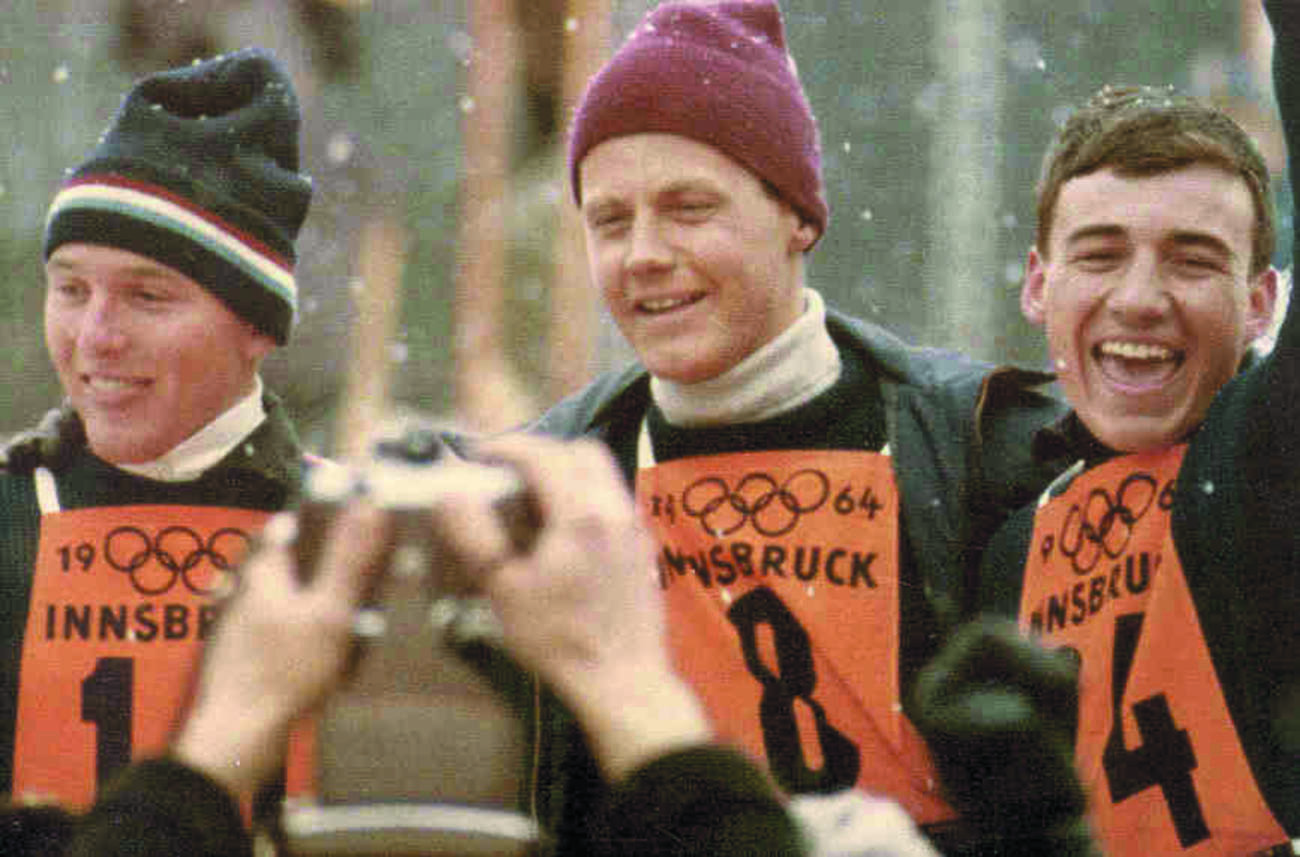I grew up hearing about “The Jimmie Heuga Express,” but not knowing much about it, it always struck me as a “racer thing.” Since then, I’ve learned it’s much more than that. Jimmie Heuga, along with his buddy Billy Kidd, put American ski racing on the map. They paved the way for all skiing disciplines to take the global stage. Jimmie reached the pinnacle of ski racing after getting his start as the original Palisades’ Mighty Might.

Born in San Francisco to a Basque immigrant, Jimmie’s family moved to Tahoe soon after, and his dad Pascal started his career at Palisades running the Aerial Tram. By the time Jimmie was five, he was skiing competitively. Pascal would drop him with the resort’s ski school director, world champion alpine racer Emile Allais. Allais was recruited by Alex Cushing and was known as the most superb technician in the world.
Jimmie learned quickly. He went on to win the NCAA Slalom title under coach Bob Beattie at the University of Colorado. At 15, Beattie brought him up to the US Ski Team where he started training with two other standout skiers, Buddy Werner and Billy Kidd. (Jimmie still holds the distinction of being the youngest man to ever make the alpine team.) He qualified to ski in the 1960 Winter Olympics but was declared too young to compete.

Billy and Jimmie became best friends. They went on to be the first American skiers to podium at the 1964 Olympics in Innsbruck, with Billy taking silver behind Jean-Claude Killy, and Jimmie earning bronze.
.

In 1967, Jimmie finished third in the points standing in giant slalom World Cup races. He went on to be the first American to win the Arlberg-Kandahar race in Germany, and it seemed he was at the start of an epic ski racing career.
Things quickly took an unexpected detour. During a downhill race in the spring of 1967, Jimmie noticed his leg going away from him. He had trouble controlling the muscles and the direction of the ski. He finished the race, but knew something was wrong. He started to notice other symptoms. Vision problems. Numbness in his extremities.
In 1970, at just 26 and in the prime of his career, Jimmie was officially diagnosed with Multiple Sclerosis, an autoimmune disease that corrupts the sheathing around the nerves. MS causes signals from your brain to go haywire and miss their intended targets in the body. With no cure, this diagnosis was a devastating blow. Jimmie was told to take it easy, save energy, and avoid physical activity. Essentially, he was instructed to let the disease take its course.

Following the directive all the way downhill until he couldn’t take it anymore, Jimmie began to challenge the advice of his doctors. He started to exercise. He reintroduced action and adventure to his life. He proved to the doctors that in fact, rigorous activity, determination, goal-setting and having a positive outlook can improve and extend the lives of MS patients.
Armed with this newfound knowledge and experience, he wanted others with MS to benefit as well. Jimmie was on a mission. His intention was to raise money to fund MS research and get exercise programs going for MS patients.
The first fundraising effort was a trip to Alaska. Jimmie and his friends convinced Ross Perot to loan them his helicopter so they could set a new record skiing the most vertical feet in one day. Among his crew was Jean Claude Killy, Phil Mahre, Stein Erickson, Billy Kidd, and Jan Helen. They had terrible weather. Killy and Mahre both hurt themselves, but they persevered and raised over $400,000. The following year they raised one million dollars, and Heuga’s talent as a passionate fundraiser and warrior for MS patients was cemented.
“The Jimmie Heuga Express” traveled from ski town to ski town attracting celebrities and staging races between his ski racing friends. The Express raised awareness, money, and ultimately led to the formation of the Jimmie Heuga Foundation for Multiple Sclerosis. Launched in 1984 with a mission to help people with MS learn how to exercise and better manage their lives, today the organization, which has been renamed Can Do MS, still delivers health and wellness education to help MS patients and their families thrive.
During the Foundation’s first 40 years, over 550,000 people with MS benefitted from Jimmie’s philosophy and programs. In collaboration with the University of Utah, the organization also delivered the first conclusive research proving that exercise benefits people with MS.

Jimmie’s charisma, intensity, and genuinely positive attitude in the face of adversity were inspiring to everyone he encountered, but especially his peers. Billy Kidd says that Jimmie never wavered in his positive attitude and “took a negative that would devastate most people and turned it around.” Jimmie used to tell Billy, “I was so lucky to have MS. If I hadn’t had MS, I never would have met my wife, had three healthy boys, or dinner at the White House.”

Jan Helen, who helped Jimmie start The Express, remembers Jimmie’s fierce intensity and drive to always be better. Helen recalls congratulating Jimmie after a race he won in Oslo, commenting how amazing his skiing was, to which Jimmie replied, “You think so? I don’t think so. I could have done better.”
Jimmie’s drive, determination, and compassion for others are what draws me to his legacy and the Can Do MS organization. I have a lot of gratitude for his contribution to the growth of US Skiing and am honored to help carry the torch in support of people living with MS and their families.








